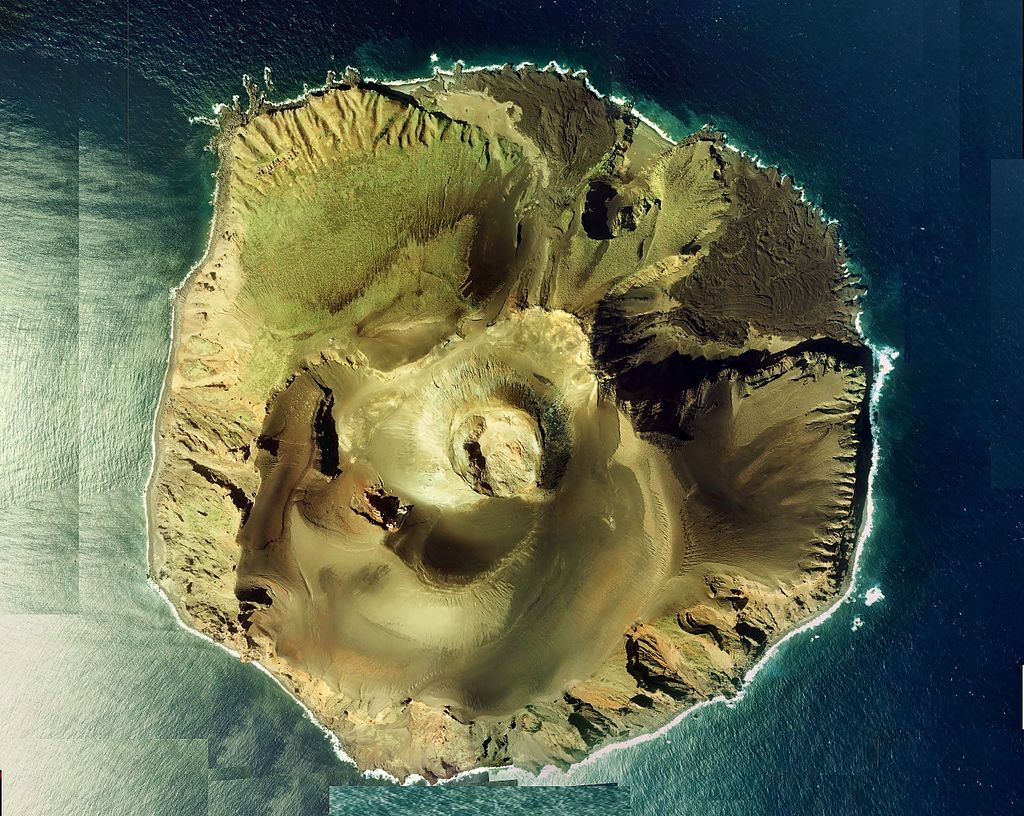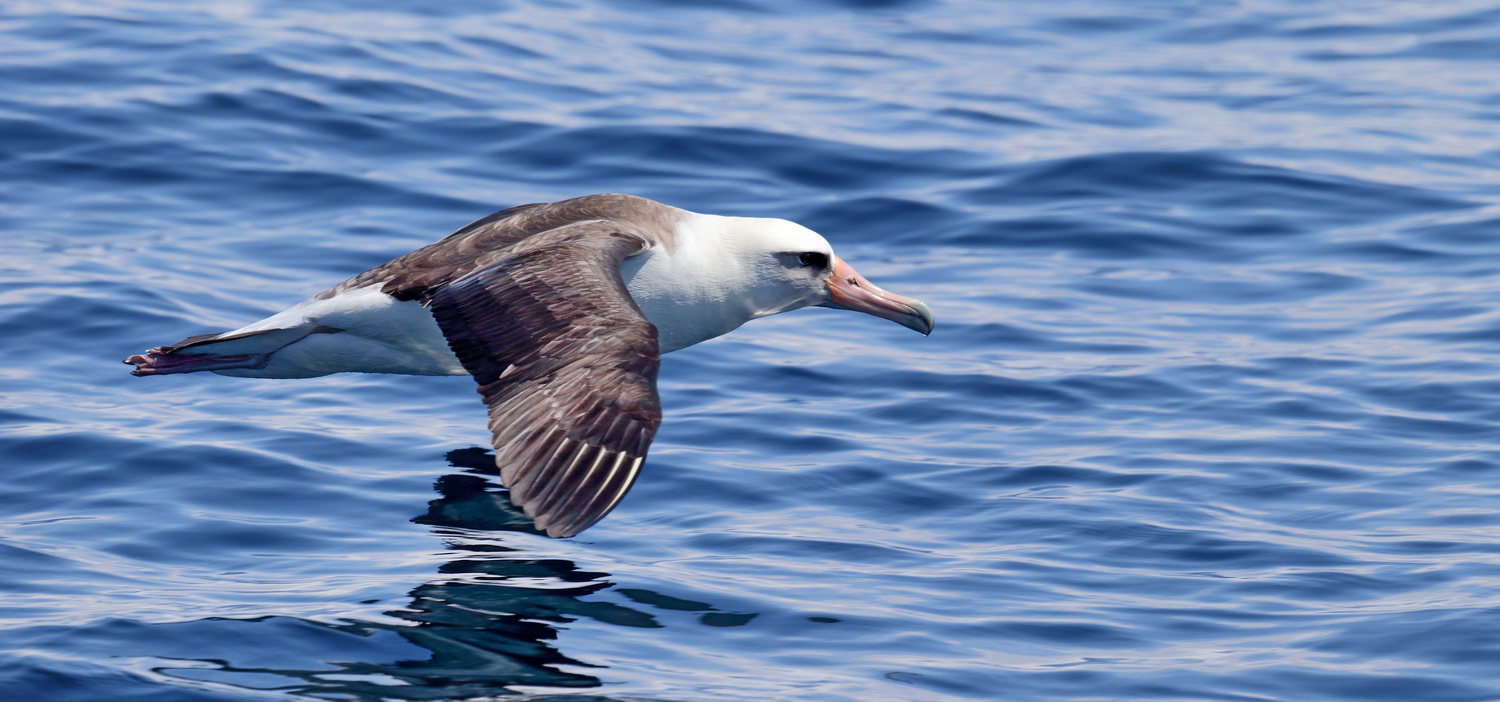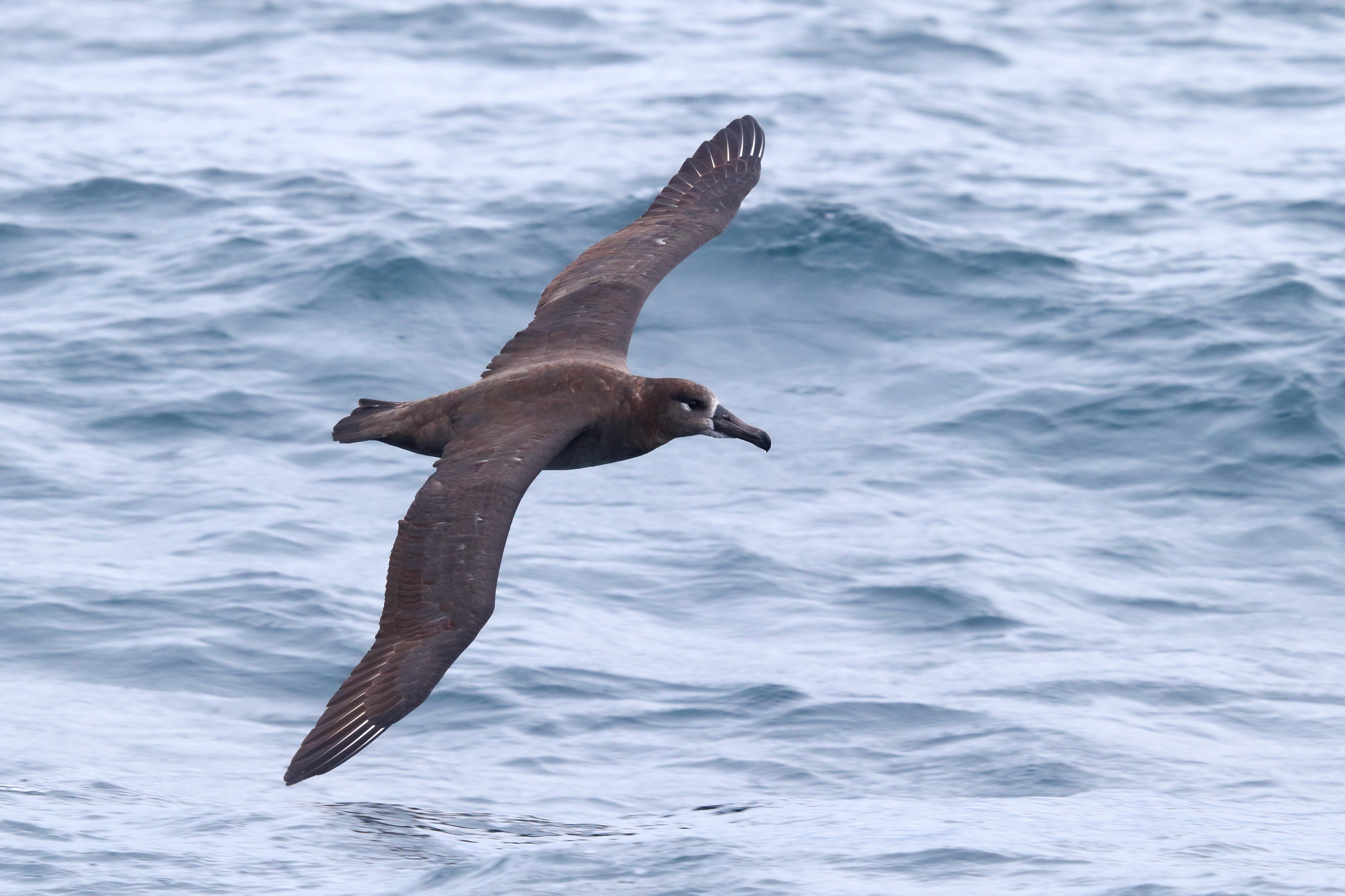Albatrosses today are among the most endangered species of seabirds. Three types of albatrosses can be found in the protected water area of the Commander Islands – the short-tailed albatross, included in the Red Data Book of Russia and vary rare, the black-footed albatross, very rare as well, and the Laysan albatross, which is more common.
Albatrosses are the largest seabird on Earth. The wingspan of some species may reach 3.7 meters, but these giants usually live in southern waters near the Antarctica. The birds seen in the North Pacifica prefer to breed on tropical islands on the Pacific Ocean, for example, Midway atoll, Tori-shima Island (or Izu-no-Tori-shima) and Hawaii. Albatrosses can spend many years in the open sea. They need firm ground only during the breeding season. Albatrosses are the most marine of all seabirds.

A young short-tailed albatross. Photo by Evgeny Mamaev
In the northern part of the Pacific Ocean the short-tailed albatross is the largest and the rarest seabird at same time. Its wingspan is over 2 meters and it is the biggest seabird in Russia. It is included in the Red Data Book of Russia. The world population of this species is estimated at just 3540 individuals.
Such low population numbers can be explained by two reasons. Firstly, the short-tailed albatross, as other albatrosses, is monogamous and they need years to find their couple. Secondly, in 1939 a volcano erupted on Tori-shima Island in Japan. Ash and lava buried the key-colony of the short-tailed albatross with all its inhabitants.

Tori-shima Island. Copyright © National Land Image Information (Color Aerial Photographs), Ministry of Land, Infrastructure, Transport and Tourism
However, the species survived because of its peculiar biology: these birds spend the first 3 to 10 years of their lives in the open sea and then return to their home island to breed. Several years after the eruption Tori-shima Island was repopulated. Today the nature of the island is protected.
In the framework of Ecological Monitoring Program, The Commander Islands Nature and Biosphere Reserve organize regular counts of seabirds and mammals in the protected water area of the islands. Short-tailed albatrosses are a rare sight here. During 2016 we found only one individual and we were very lucky. In 2017 we haven’t found any of them yet.
Black-footed albatross is more frequent around the Commander Islands. Its world population is estimated at about 67 000 breeding pairs. They are counted in pairs because of their way of life – it is impossible to track the exact number of young non-breeding individuals, as they live in the ocean and they are not seen ashore. The Laysan albatross is far more common sight around the Commander Islands and its population is about 437 000 breeding pairs.

The Laysan albatross. Photo by Evgeny Mamaev
Regardless of high numbers, the black-footed and the Laysan albatrosses, as well as other species of this family, are in danger. The main risk is connected with trawl and demersal longline vessels.
Birdlife International published a full annual report of the Albatross Task Force (ATF) on its web-site. According to this report, 15 of 22 modern albatross species are threatened with extinction and about 100 000 of these kings of the ocean die in the fishing gear. These are horrifying numbers, especially realising, that these birds were killed accidentally, as they are not used as food or in any other way. Still, there is a way out.
Albatross Task Force, created in cooperation with Birdlife International in 2006, work to develop and integrate special bird-scaring lines on fishing vessels to avoid birds getting near the dangerous gears.
.jpg)
A small trawl vessel in La Rochelle port, France. Photo by Jean-Pierre Bazard, wikipedia.org
In 2018 Argentina is planning to introduce new rules to protect seabirds. These rules will require trawlers to use bird-scaring line. Today their main trawl fleet is responsible for the death of 13 500 black-browed albatrosses. However, about 80% of big fishing companies have already changed their policies. Now the death rate is expected to drop by 85%.
On the other side of the Atlantic Ocean Namibia introduced a new legislation in protection of seabirds. 100% of its trawlers and longline vessels are equipped with the scaring lines. It was constructed by a local women’s group – Meme Itumbapo – in cooperation with Birdlife International.
The use of bird-scaring lines is one of the most efficient and economically viable ways to solve the problem of albatross extinction. For example, South Africa reduced the bycatch of these birds by 99% by using the lines on trawl ships.
Along with the work to reduce the negative impact of our activities, a huge role can be given to marine protected areas around the world. For example, the Commander Islands Reserve has a 30-mile-wide water area. Fishing is banned here, so seabirds and marine mammals are safe.
The head photo by Evgeny Mamaev. A young black-footed albatross.










